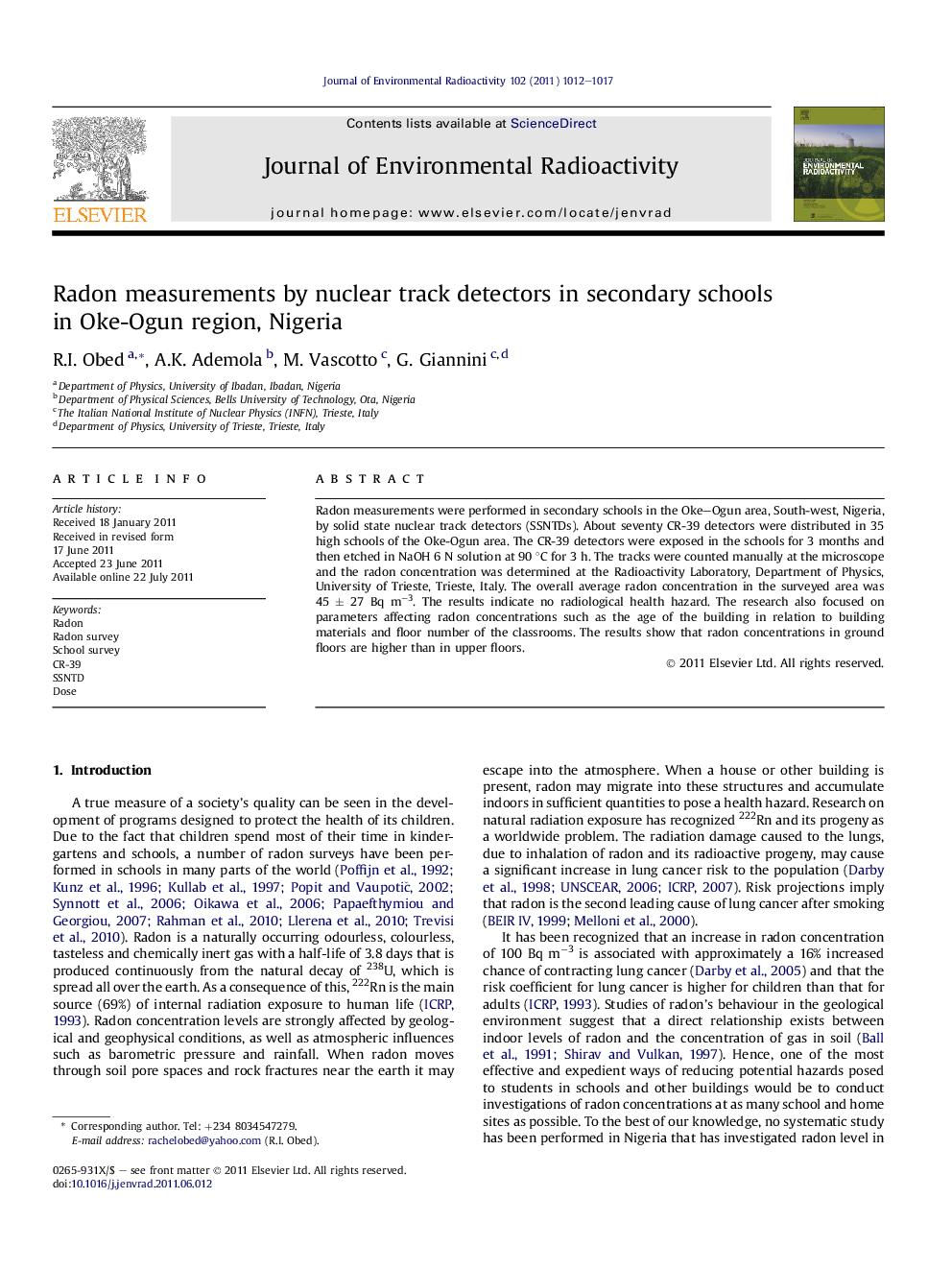| Article ID | Journal | Published Year | Pages | File Type |
|---|---|---|---|---|
| 1738626 | Journal of Environmental Radioactivity | 2011 | 6 Pages |
Radon measurements were performed in secondary schools in the Oke–Ogun area, South-west, Nigeria, by solid state nuclear track detectors (SSNTDs). About seventy CR-39 detectors were distributed in 35 high schools of the Oke-Ogun area. The CR-39 detectors were exposed in the schools for 3 months and then etched in NaOH 6 N solution at 90 °C for 3 h. The tracks were counted manually at the microscope and the radon concentration was determined at the Radioactivity Laboratory, Department of Physics, University of Trieste, Trieste, Italy. The overall average radon concentration in the surveyed area was 45 ± 27 Bq m−3. The results indicate no radiological health hazard. The research also focused on parameters affecting radon concentrations such as the age of the building in relation to building materials and floor number of the classrooms. The results show that radon concentrations in ground floors are higher than in upper floors.
► We measured radon concentration levels in a sample of schools in Oke-Ogun, Nigeria. ► We analyzed the main factors that affect indoor radon levels. ► Dependence of radon concentrations on floor levels confirmed the influence of soil as main source of indoor radon.
